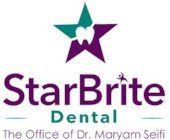Five Ways to Avoid a Root Canal
While no one looks forward to a root canal, the procedure can save teeth and prevent you from needing a bridge or a dental implant. On the other hand, while a root canal can be very helpful, it’s valuable to know how to prevent needing one in the first place. We’ll tell you how to do this, but first, we’ll go over the root canal procedure so you understand what will happen if you do need one.
<!-- /* Font Definitions */ @font-face {font-family:"Cambria Math"; panose-1:2 4 5 3 5 4 6 3 2 4; mso-font-charset:1; mso-generic-font-family:roman; mso-font-format:other; mso-font-pitch:variable; mso-font-signature:0 0 0 0 0 0;} @font-face {font-family:Calibri; panose-1:2 15 5 2 2 2 4 3 2 4; mso-font-charset:0; mso-generic-font-family:auto; mso-font-pitch:variable; mso-font-signature:3 0 0 0 1 0;} /* Style Definitions */ p.MsoNormal, li.MsoNormal, div.MsoNormal {mso-style-unhide:no; mso-style-qformat:yes; mso-style-parent:""; margin-top:0in; margin-right:0in; margin-bottom:8.0pt; margin-left:0in; line-height:107%; mso-pagination:widow-orphan; font-size:11.0pt; font-family:Calibri; mso-ascii-font-family:Calibri; mso-ascii-theme-font:minor-latin; mso-fareast-font-family:Calibri; mso-fareast-theme-font:minor-latin; mso-hansi-font-family:Calibri; mso-hansi-theme-font:minor-latin; mso-bidi-font-family:"Times New Roman"; mso-bidi-theme-font:minor-bidi;} .MsoChpDefault {mso-style-type:export-only; mso-default-props:yes; font-size:11.0pt; mso-ansi-font-size:11.0pt; mso-bidi-font-size:11.0pt; font-family:Calibri; mso-ascii-font-family:Calibri; mso-ascii-theme-font:minor-latin; mso-fareast-font-family:Calibri; mso-fareast-theme-font:minor-latin; mso-hansi-font-family:Calibri; mso-hansi-theme-font:minor-latin; mso-bidi-font-family:"Times New Roman"; mso-bidi-theme-font:minor-bidi;} .MsoPapDefault {mso-style-type:export-only; margin-bottom:8.0pt; line-height:107%;} @page WordSection1 {size:8.5in 11.0in; margin:1.0in 1.25in 1.0in 1.25in; mso-header-margin:.5in; mso-footer-margin:.5in; mso-paper-source:0;} div.WordSection1 {page:WordSection1;} --> The Procedure
A root canal is needed when decay, infection or injury has broken through the enamel and dentin of your tooth and enabled bacteria to invade the soft tissue inside. This soft tissue is called the pulp . Blood supply and the nerve traveling to the tooth are contained in the pulp.
When the pulp is damaged, it must be removed and replaced with sterile material to save your tooth. If this infection is allowed to remain, an abscess can form, causing pain and possibly resulting in damage to the jawbone.
First, a small access hole must be drilled. For a front tooth, this hole would be drilled in the back of the tooth. In a rear tooth, it would be drilled in the biting surface. The area inside the tooth must then be thoroughly disinfected. Next, the pulp must be thoroughly cleaned out, using a series of very fine files to scrub the inner surfaces.
If there is an infection, your dentistmay insert medication inside the tooth and temporarily close it up. A week later, the final work may be done.
The open areas inside the tooth must be filled with sterile material. A rubber-like material called gutta-percha is used to fill the space all the way to the bottom of the root. Then a filling is placed over the opening drilled into the tooth.
Most teeth will need a crown placed over them to protect them from chewing stresses. This is necessary to ensure the protection of the remaining walls of your tooth. This crown will be performed after the completion of your root canal therapy.
<!-- /* Font Definitions */ @font-face {font-family:"Cambria Math"; panose-1:2 4 5 3 5 4 6 3 2 4; mso-font-charset:1; mso-generic-font-family:roman; mso-font-format:other; mso-font-pitch:variable; mso-font-signature:0 0 0 0 0 0;} @font-face {font-family:Calibri; panose-1:2 15 5 2 2 2 4 3 2 4; mso-font-charset:0; mso-generic-font-family:auto; mso-font-pitch:variable; mso-font-signature:3 0 0 0 1 0;} /* Style Definitions */ p.MsoNormal, li.MsoNormal, div.MsoNormal {mso-style-unhide:no; mso-style-qformat:yes; mso-style-parent:""; margin-top:0in; margin-right:0in; margin-bottom:8.0pt; margin-left:0in; line-height:107%; mso-pagination:widow-orphan; font-size:11.0pt; font-family:Calibri; mso-ascii-font-family:Calibri; mso-ascii-theme-font:minor-latin; mso-fareast-font-family:Calibri; mso-fareast-theme-font:minor-latin; mso-hansi-font-family:Calibri; mso-hansi-theme-font:minor-latin; mso-bidi-font-family:"Times New Roman"; mso-bidi-theme-font:minor-bidi;} .MsoChpDefault {mso-style-type:export-only; mso-default-props:yes; font-size:11.0pt; mso-ansi-font-size:11.0pt; mso-bidi-font-size:11.0pt; font-family:Calibri; mso-ascii-font-family:Calibri; mso-ascii-theme-font:minor-latin; mso-fareast-font-family:Calibri; mso-fareast-theme-font:minor-latin; mso-hansi-font-family:Calibri; mso-hansi-theme-font:minor-latin; mso-bidi-font-family:"Times New Roman"; mso-bidi-theme-font:minor-bidi;} .MsoPapDefault {mso-style-type:export-only; margin-bottom:8.0pt; line-height:107%;} @page WordSection1 {size:8.5in 11.0in; margin:1.0in 1.25in 1.0in 1.25in; mso-header-margin:.5in; mso-footer-margin:.5in; mso-paper-source:0;} div.WordSection1 {page:WordSection1;} --> Prevention
It’s good that there is a solution to save your teeth, but it’s better to avoid the need for a root canal. In most cases, it’s not that difficult. Regular care at home and following your dentist’s recommendations are key. You want to prevent your teeth from developing cavities (also called caries) and if any cavities form, they should be treated promptly. Then, there will be no advanced cavities or infection to harm the pulp of your teeth.
Therefore, just do the following:
1.Brush your teeth thoroughly with a soft-bristled brush, twice each day. When you’re away from your toothbrush, it also helps to rinse your mouth out after meals.
2.Floss your teeth every day without fail. Even floss all the way behind your back teeth and use a floss threader to clean under bridges.
3.Avoid frequent snacks and too many sweets like candies, pastries or sodas. The bacteria that love to grow on your teeth also love sugars; and they increase the acidity of your mouth.
4.Follow your dentist’s recommendations for cleanings and checkups. Our lives go through changes and we can get busy, or move from one location to another and have to find a new dentist. Try to make a dental care schedule a constant in your life and the lives of your family.
5.If any problems show up, such as toothaches, gum infections, pain or other problems, don’t put off checking it out and getting proper care. Waiting just a few days could make a difference in the remedy needed and, of course, your expense.
You’ll only have one set of permanent teeth and they need to last.. With the right care, you can keep your healthy, beautiful smile for your whole life.
Sources:
http://www.webmd.com/oral-health/root-canals?page=3
http://www.deardoctor.com/articles/root-canal-treatment-step-by-step/page2.php
http://www.aae.org/patients/treatments-and-procedures/root-canals/root-canals-explained.aspx
http://www.deardoctor.com/articles/root-canal-treatment-step-by-step/



